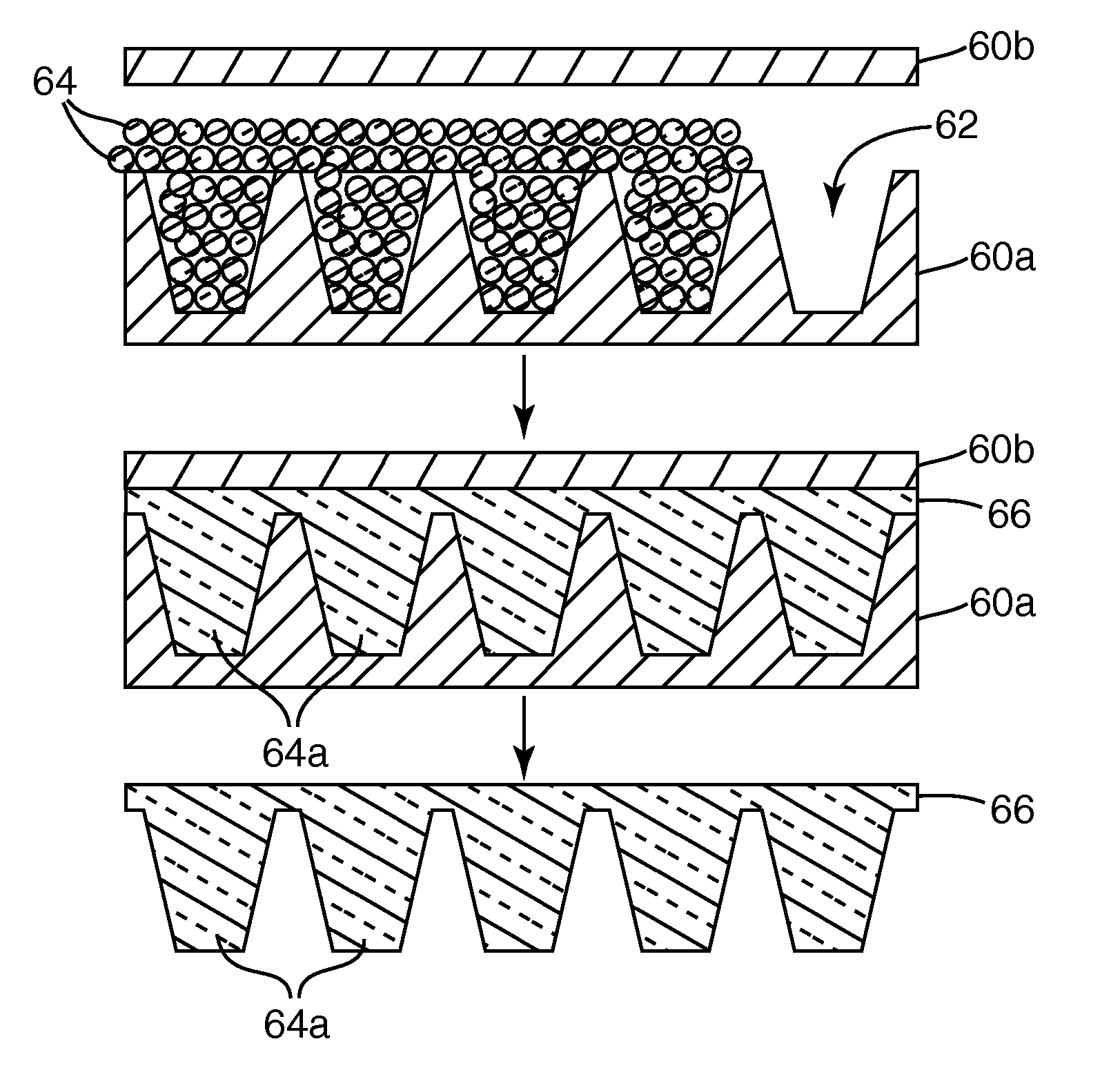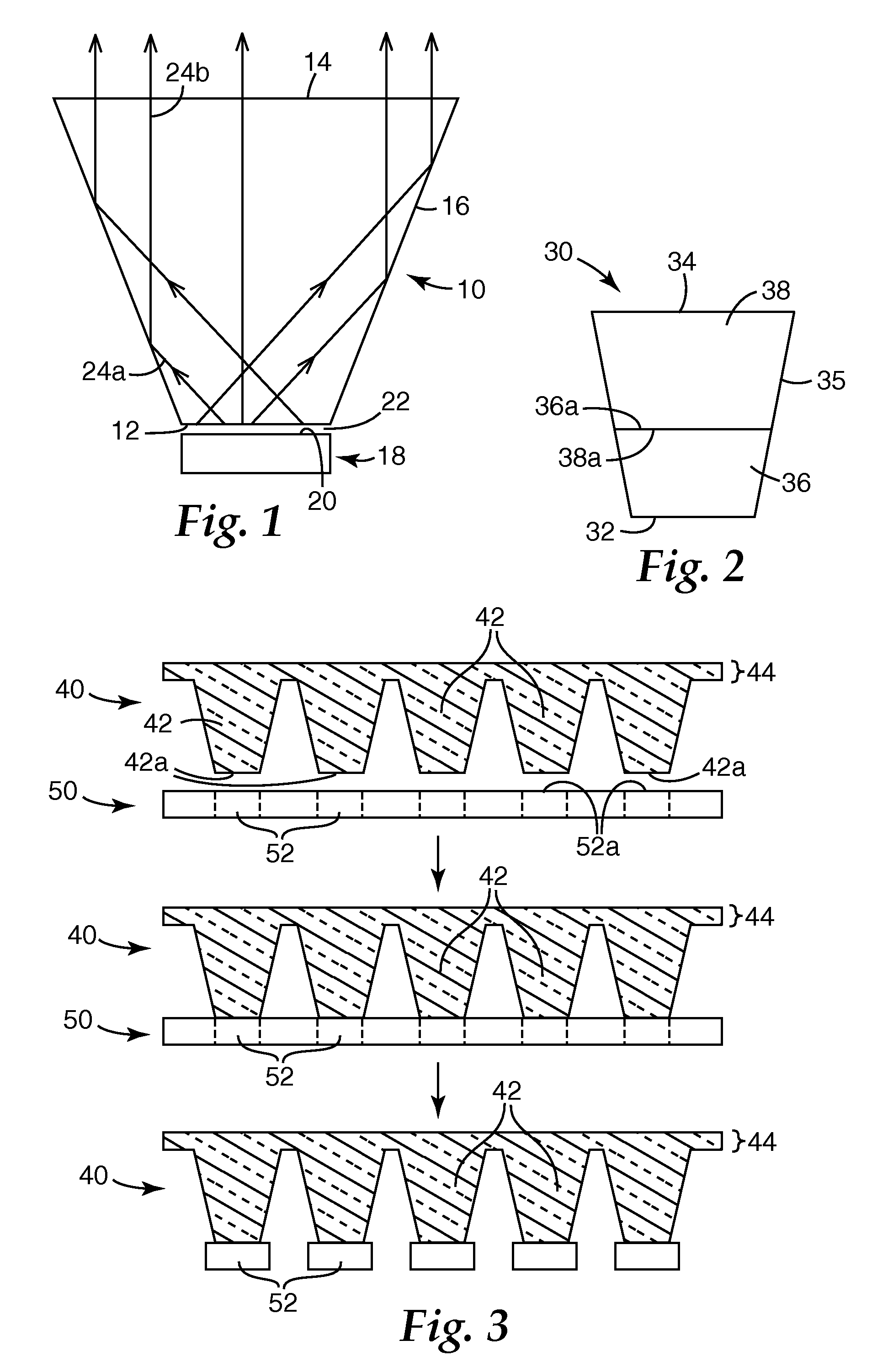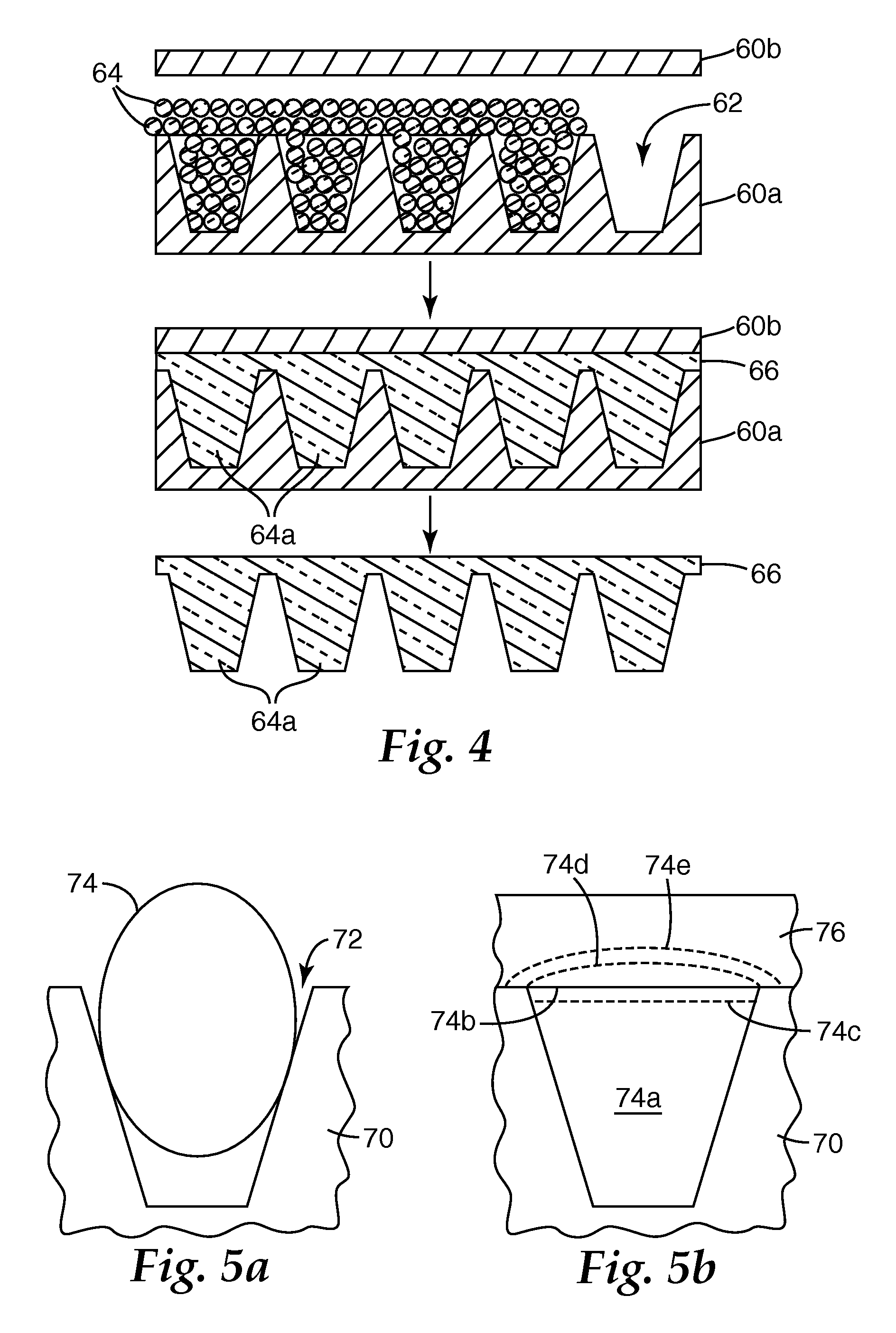Methods of Making LED Extractor Arrays
a technology of extractor arrays and led strips, which is applied in the direction of glass tempering devices, lighting and heating devices, instruments, etc., can solve the problems of limited success of conventional encapsulants, poor achievable brightness of led strips, and waste of light generated by dies
- Summary
- Abstract
- Description
- Claims
- Application Information
AI Technical Summary
Benefits of technology
Problems solved by technology
Method used
Image
Examples
Embodiment Construction
[0018] The following Description describes light emitting diode (LED) light sources and components therefor. In this regard, “light emitting diode” or “LED” refers to a diode that emits light, whether visible, ultraviolet, or infrared. It includes incoherent encased or encapsulated semiconductor devices marketed as “LEDs”, whether of the conventional or super radiant variety, and whether of the forward-emitting or side-emitting variety, the latter of which is often advantageous in display applications. If the LED emits non-visible light such as ultraviolet light, and in some cases where it emits visible light, it can be packaged to include an organic or inorganic phosphor (or it may illuminate a remotely disposed phosphor) to convert short wavelength light to longer wavelength visible light, in some cases yielding a device that emits white light. An “LED die” is an LED in its most basic form, i.e., in the form of an individual component or chip made by semiconductor processing proce...
PUM
| Property | Measurement | Unit |
|---|---|---|
| Fraction | aaaaa | aaaaa |
| Fraction | aaaaa | aaaaa |
| Surface roughness | aaaaa | aaaaa |
Abstract
Description
Claims
Application Information
 Login to View More
Login to View More - Generate Ideas
- Intellectual Property
- Life Sciences
- Materials
- Tech Scout
- Unparalleled Data Quality
- Higher Quality Content
- 60% Fewer Hallucinations
Browse by: Latest US Patents, China's latest patents, Technical Efficacy Thesaurus, Application Domain, Technology Topic, Popular Technical Reports.
© 2025 PatSnap. All rights reserved.Legal|Privacy policy|Modern Slavery Act Transparency Statement|Sitemap|About US| Contact US: help@patsnap.com



